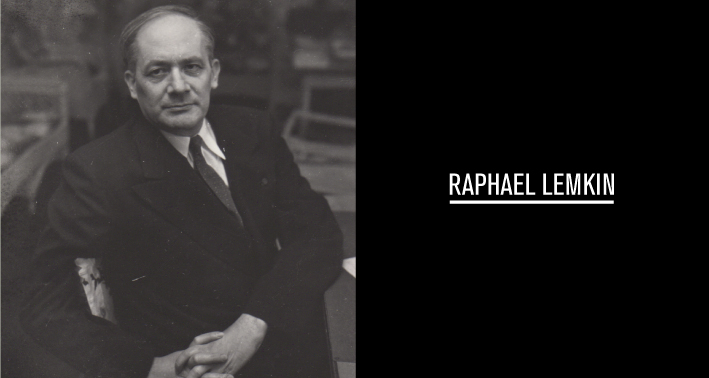
A crime without name
This chapter reviews the historical development of the word “genocide,” both through the story of Raphael Lemkin as well as the drafting history of the UN Genocide Convention. Central to this is an understanding of three conceptual areas that reappear as recurring threads in the development of international law against the destruction of groups—which groups would be protected, what acts would be defined as criminal, and who would have the jurisdictional responsibility to prosecute individuals accused of those criminal acts. Finally, the chapter concludes by placing genocide within the larger definitional nexus of mass atrocity crimes—including war crimes, crimes against humanity, and ethnic cleansing.
Raphael Lemkin believed in the rule of law. The absence of law, he argued, provided a shelter that allowed people to commit the most horrific of crimes — mass atrocities. Lemkin spent his life trying to convince the international community that law, and only law, could stop unspeakable cycles of violence. His dedication came from the recognition that — “It happened so many times” — the mass extermination of groups of people. Lemkin recognized a pattern from a very early age.
As a young Jewish lawyer in Lviv, Lemkin watched Hitler’s rise to power with grave concern. In 1933, believing “a law” could stop Hitler, Lemkin submitted a proposal to the 5th International Conference for the Unification of Criminal Law (Lemkin’s “Madrid Report”). The proposal sought to outlaw the “premeditated destruction of racial, religious or social collectives.” Lemkin’s attempt to warn the international community was dismissed – his rationale virtually ignored.
Unable to convince his parents of the severity of the situation, Lemkin fled Poland alone in 1941 and made his way to America. He lost 49 members of his family to Nazi concentration camps.
Winston Churchill spoke with uneasiness and distress in 1941 when he said, “we are in the presence of a crime without a name.”
Winston’s Churchill’s suggestion that “we are in the presence of a crime without a name” in 1941, was a call to action for Lemkin. He immediately set out to find a word to appropriately describe the horrific nature of mass atrocities. Working furiously, Lemkin believed if he could create a word – if he could give “the crime” a name – the international community would be able to stop “the crime”. Lemkin settled on “genocide” by combining the Greek word “geno”, meaning group or families, with the Latin word “cide”, meaning killing.
With renewed energy, Lemkin quickly promoted the word “genocide” at the newly formed United Nations. He was a constant presence, chasing down delegates to talk about the “new word.” Raphael Lemkin finally realized success in 1948 after decades of working tirelessly. The UN adopted the Convention on the Prevention and Punishment of the Crime of Genocide — which he helped draft and lobbied delegates to accept. However, Lemkin’s success was short-lived – the United States refused to ratify the convention.
Despite his commitment to humanity, Raphael Lemkin died alone and penniless, in 1959, in New York. Only a handful of people attended his funeral. He died almost as anonymously in New York as his family did in Nazi concentration camps.
Sundance award-winning documentary Watchers of the Skychronicles his crusade to create a law that could protect civilians from mass atrocities. The film weaves interviews with archive footage, featuring those continuing Lemkin’s struggle and showing that the issue is still relevant today. “I think that you just have to turn on the news,” its director Edet Belzberg tells Tom Brook. “It’s very apparent that genocide is going on.”
Posthumous
A Man Called Lemkin
He had no money, no office, no assistant. He had no U.N. status or papers
The documentary shows a few black-and-white images of Lemkin, but relies on animation to tell his story. Belzberg argues that chimes with Lemkin’s own philosophy.
“He really believed that creativity and beauty were so important, and it’s what we as humans have to give,” she says. “The way he described his childhood, and also the fairy tales that influenced him as a child … it just seemed like a natural thing to bring his story to life in that way.”
Little is known of Lemkin himself, and when he died penniless in 1959, just a handful of people attended his funeral.

